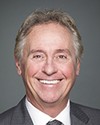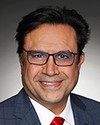Thank you, Mr. Chair.
I'd like to welcome the officials from both departments. Thank you very much for the great work that you have been doing, given the challenges we are facing.
Let me start with Ms. Thornton and PHAC.
Ms. Thornton, in your opening remarks, you talked about how the agency has evolved, how the NESS has evolved over the past while, and where the focus is. With regard to PHAC's mandate, two of the core mandates stood out to me. One was “prevent and control infectious diseases”, and the other was “prepare for and respond to public health emergencies”.
Can you quickly shed light on how you monitor these infectious diseases that are being spread internationally, as well as domestically?



